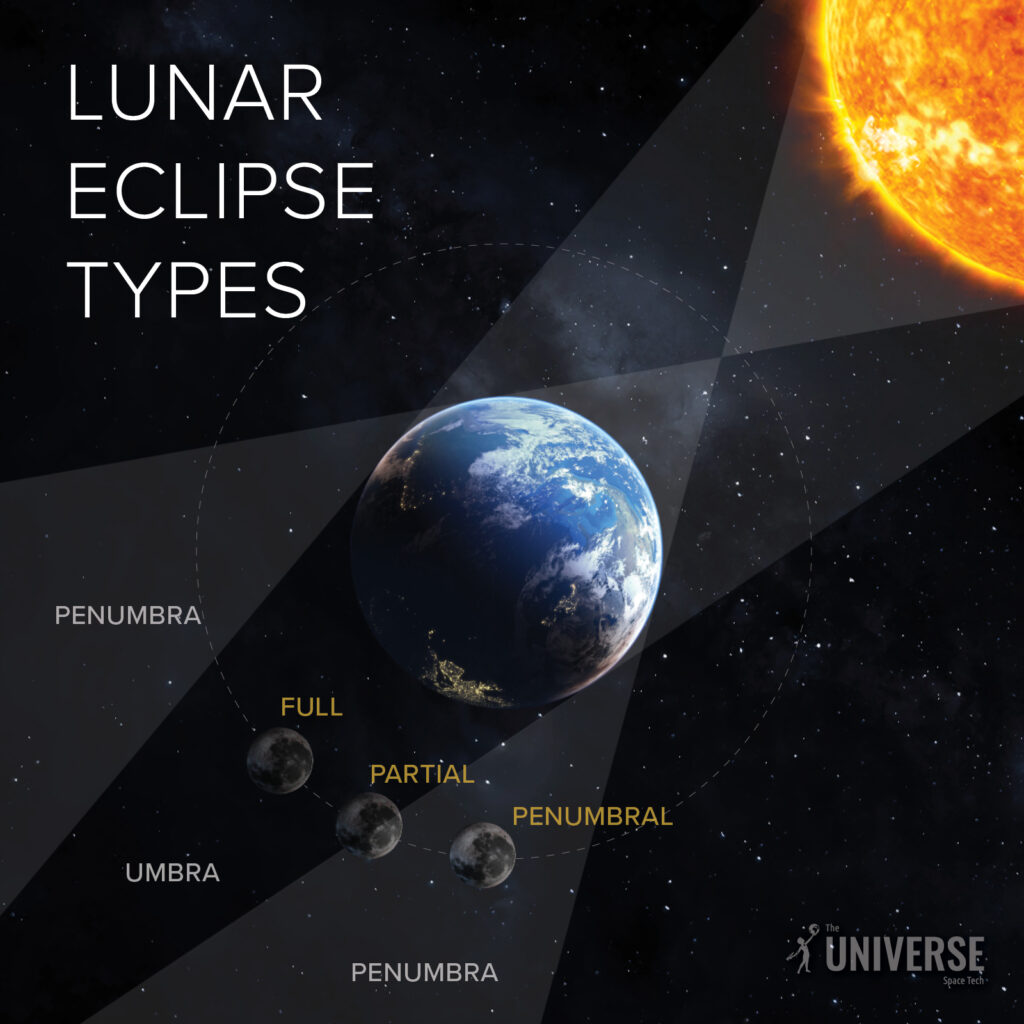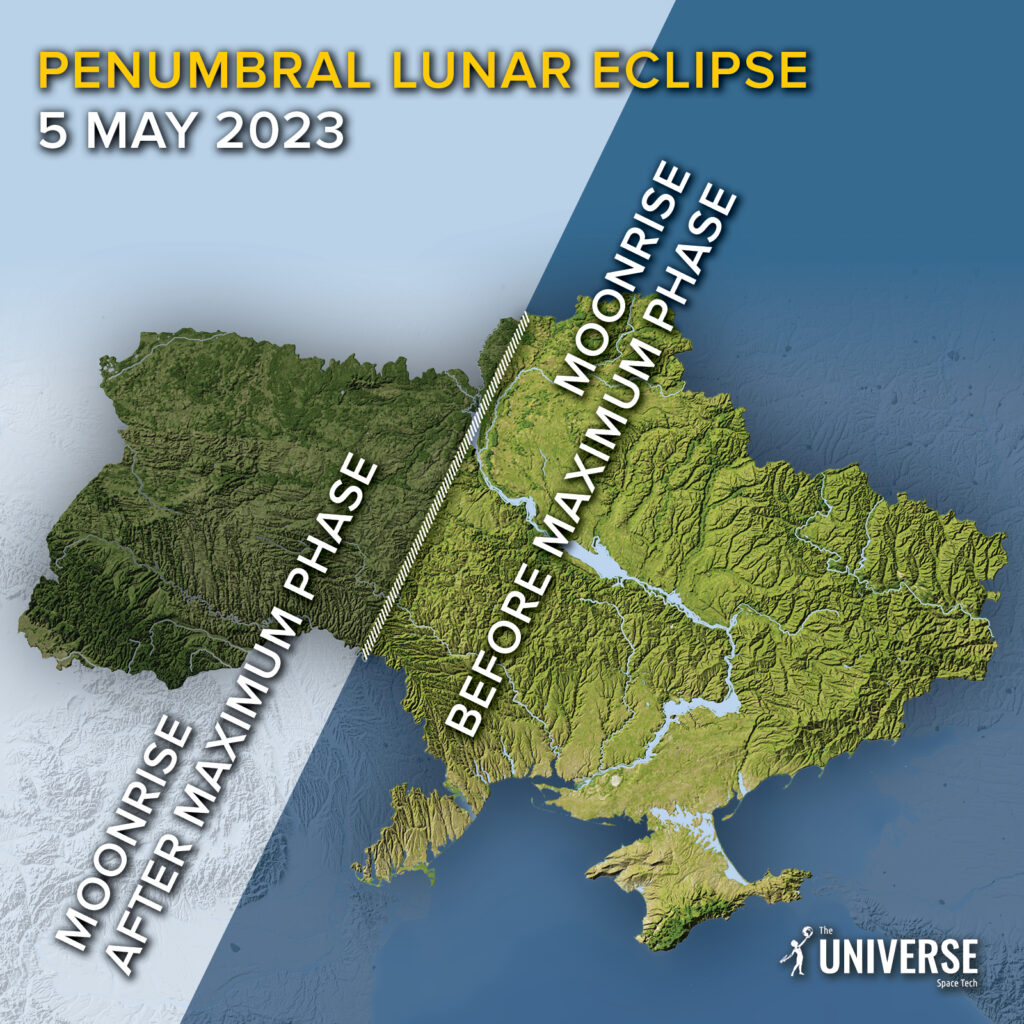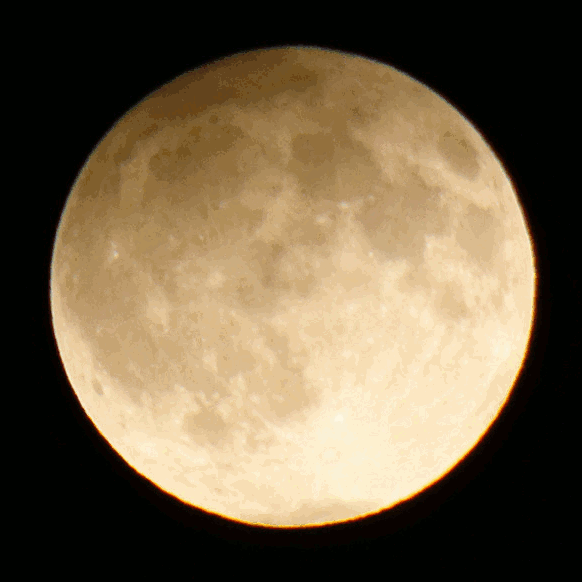Lunar eclipses at a single point on the earth’s surface are observed more often than solar ones. This is due to the fact that the last can be seen only from the territories where the penumbra cone of the Moon has fallen — an area of space in which the Sun looks partially covered by our natural moon. The same penumbra (obviously much larger) has the Earth. On May 5, the lunar disk will sink into it by 96.5% of its diameter, only slightly “missing” the edge of the earth’s shadow.

Usually penumbral lunar eclipses are difficult to see with the naked eye: even a small edge of the Sun shines strongly enough to effectively illuminate the surface of the Moon. But when this edge becomes very small (i.e. at phases of solar eclipse of more than 80%), the illumination level decreases significantly, and the edge of the lunar disk, located closer to the contour of the earth’s shadow, becomes noticeably darker than the opposite one. In the photos, this difference in surface brightness is even better visible.
From the beginning to the end, that is, from the “first contact” of the Moon with the earth’s penumbra to the complete exit from it, the eclipse will be visible in New Zealand, Australia, Oceania, Indonesia and Japan, the Philippines, the Far East, China and Indochina, India, Pakistan, Afghanistan, Northern and Central Siberia, Central Asia, in the east of Kazakhstan, Iran and the Arabian Peninsula, as well as on the island of Madagascar. To the west of the line passing approximately through the cities of Tyumen, Tehran and the South African port of Durban, the Moon will rise in penumbral phases of varying magnitude.

For observers in Kyiv, the lunar disk will appear above the horizon almost at the moment of the maximum eclipse, which will occur at 08 o’clock 24 minutes p.m. GMT+3. It is easy to understand that in the territories to the south and east, the conditions for observing this phenomenon will be better, since the Moon will rise earlier there. Accordingly, Western Ukraine will see a smaller part of the eclipse. Thereafter, our moon will gradually come out of the earth’s penumbra and completely leave it at 10:32 p.m.
Therefore, observations must begin when the Moon is low above the horizon, so it is better to choose some open place or elevation for them. Keep in mind that due to the military situation, it is highly undesirable to climb on the roofs of high-rise buildings with astronomical instruments (and even without them).

Interestingly, during the sunrise of the “half-darkened” Moon, the sunset will take place in the opposite part of the horizon. Approximately an hour after it, the sky will become quite dark, and it will be possible to notice that a 3rd magnitude star Zubenelgenubi (α Libra) is located 2° north of the lunar disk. Already a small pair of binoculars will demonstrate a companion of the 5th magnitude less than 4 angular minutes from it. These two luminaries are actually located in space not very far from each other and, most likely, are gravitationally connected.
The next morning, another maximum awaits us — the Earth will plunge into the densest part of the meteor swarm of the η-Aquarids associated with the famous Halley comet (1P/Halley). It is rather inconvenient to observe meteors of this shower in our latitudes, besides, this year we will be able to see only the brightest of them — most of them will “drown” in the moonlight.
The next eclipse of the Moon will be a partial shadow one. It will take place on October 28, 2023, and will be observed on the territory of Ukraine from beginning to end. Its maximum shadow phase will exceed 12%.
Follow us on Twitter to get the most interesting space news in time
https://twitter.com/ust_magazine

